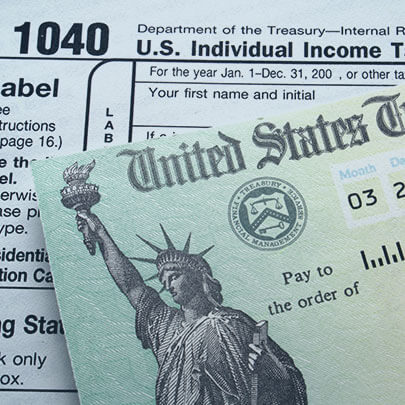What Not to Spend Your Stimulus Check On

Speculative bubbles in NFTs bring to mind the tulip bulb and Beanie Baby frenzies. It is easy to look back at those bubbles and laugh, but here we go again! Think twice before using your stimulus check to be the next generation’s laughingstock.
Contributed by Doug Walters , Max Berkovich , ,
Stimulus checks are on their way this week. For those who are not relying on this check to pay the bills or put food on the table, there are many shiny objects these days to distract from better uses of your newfound cash. Many of these distractions fall into the category of Non-Fungible Tokens or NFTs. Add these to the growing list of bubbles and fads (including SPACs and retail squeeze stocks) of which investors should be wary.
So, what is an NFT? It is nothing more than a unit of data on a blockchain ledger. Each NFT provides proof of ownership of a digital asset. It is the same technology upon which cryptocurrencies are built. But NFTs are growing well beyond digital currencies. You can now purchase unique digital images, videos, and music, for example. Recently Christie’s sold a piece of NFT artwork for $69 million. One of the hottest exchanges is the NBA Top Shot exchange, where users can purchase and exchange digital trading cards. NBA tokens have been exchanged for 6-digit price tags, with hundreds of millions of dollars of transactions.
Blockchain technology has enormous potential to revolutionize some industries. But buyer beware. Many of today’s exchanges are just fads, and we have seen these sorts of bubbles many times in the past. Demand will drive new entrants, and what once seemed novel will soon become a commodity. If you collected baseball cards like me in the late ’80s and early ’90s, you would know what I mean. Baseball cards were in demand, so manufacturers boosted production and few cards from that era are now worth the paper they were printed on. See our sidebar for a reminder of some of the more infamous bubbles.
The bottom line is that these are not investments but rather speculative gambles. If you have entertainment money set aside and want to spend it on a digital image of your favorite NBA star in mid-dunk, go for it. But do not confuse this with investing; there is a good chance if you purchase an NFT with your stimulus check, you will lose money. Alternatively, if history were to repeat itself, $1,400 invested in the stock market for 30 years could grow to over $25,000. I know which one I would choose.

Sound familiar?
Bubbles have occurred regularly throughout history. We are all familiar with the Dotcom and Housing bubbles, which had big economic impacts. But others are just outright comical. We may look back at NBA Hot Shots and NFT artwork in the same way:
- The Dutch tulip bulb market bubble experienced a bubble in the 1630s. An irrational frenzy to own bulbs swept the nation, driving prices up exponentially. At the peak of the bubble, some tulip bulbs traded hands at a value of $750,000 in today’s money. The bubble lasted roughly three years before coming crashing down to earth (where bulbs belong).
- The Beanie Baby bubble of the 1990s seems comical in hindsight. Ty, Inc. manufactured a sense of scarcity, and little stuffed animals suddenly became sought after collectibles. Yet predictably, at the first sign of a crack in demand, prices came crashing down. A popular set termed the “American Trio,” once sold for thousands of dollars, would be lucky today to fetch tens of dollars.
Headlines This Week
Buyers’ Club
- The U.S. Federal Reserve is planning to maintain an easy-monetary policy through 2023, despite an improved growth outlook.
- The Bank of Japan (BOJ) made minor adjustments to its long-term rates policy while maintaining its commitment to buy about $55 billion of exchange-traded funds (ETFs).
- The Bank of England (BOE) followed U.S. Federal Reserve’s steps by keeping their monetary policy unchanged while targeting asset purchases of about $1.2 trillion.
Yields and Ratios
- Dealers and major banks have sold over $80B in Treasuries in the last two weeks to clean up their books ahead of the Fed’s decision to let the relaxed capital requirements expire.
- The decision not to extend the temporary exemption of U.S. Treasuries from supplemental liquidity ratio calculation is, to some degree, a nod to the strength of bank balance sheets.
- Those moves contributed to the rise in bond yields we have seen since December, with the 10-year U.S. Treasury currently standing near a yield of 1.75% and the 30-year flirting with 2.5%.
Trading Barbs
- China and U.S. trade representatives met in Alaska to reopen trade negations.
- The U.S. accused China of unfair trade, racism, and civil rights abuses in Hong-Kong.
- China’s delegates accused the U.S. of promoting one of many versions of democracy.
- Despite the seemingly tense trade discussions, President Biden and China’s supreme leader Xi Jinping are reportedly seeking to meet sometime in April.
The Week Ahead
Powell Testifies
Fed Chairman Jerome Powell will be in Washington next week to testify before Congress regarding the Coronavirus Aid, Relief, and Economic Security (CARES) Act.
- On Tuesday, he will testify before the House Committee on Financial Services, followed by the Senate Committee on Banking, Housing, and Urban Affairs on Wednesday.
- Powell will also be speaking at the Bank for International Settlements Virtual Innovation Summit on Monday, where he and other global financial leaders will be addressing the issue of “How Can Central Banks Innovate in the Digital Age?”.
The Saga Continues
The retail investors’ darling, GameStop, is set to report its earnings next Tuesday.
- This will be the company’s first earnings report since shares have soared over 1,200%.
- Estimates show the video game retailer is poised to report a loss for the fiscal year.
- At $200, the stock is currently trading more than six times the most bullish price targets from Wall Street.
- What happens in the wake of the report is sure to be another page in this company’s stock’s wild and strange story.
Key Data Points
Next week will see several important economics metrics released.
- The headline will be Thursday’s U.S. Q4 GDP, with consensus expecting an annualized rate of 4.1%.
- Later in the week, we have the Manufacturing PMI, Durable Goods Ordered, New Home Sales, and Core Personal Consumption Expenditures.
About Strategic
Founded in 1979, Strategic is a leading investment and wealth management firm managing and advising on client assets of over $2 billion.
OverviewDisclosures
Strategic Financial Services, Inc. is a SEC-registered investment advisor. The term “registered” does not imply a certain level of skill or training. “Registered” means the company has filed the necessary documentation to maintain registration as an investment advisor with the Securities and Exchange Commission.
The information contained on this site is for informational purposes and should not be considered investment advice or a recommendation of any particular security, strategy or investment product. Every client situation is different. Strategic manages customized portfolios that seek to properly reflect the particular risk and return objectives of each individual client. The discussion of any investments is for illustrative purposes only and there is no assurance that the adviser will make any investments with the same or similar characteristics as any investments presented. The investments identified and described do not represent all of the investments purchased or sold for client accounts. Any representative investments discussed were selected based on a number of factors including recent company news or earnings release. The reader should not assume that an investment identified was or will be profitable. All investments contain risk and may lose value. There is no assurance that any investments identified will remain in client accounts at the time you receive this document.
Some of the material presented is based upon forward-looking statements, information and opinions, including descriptions of anticipated market changes and expectations of future activity. Strategic Financial Services believes that such statements, information, and opinions are based upon reasonable estimates and assumptions. However, forward-looking statements, information and opinions are inherently uncertain and actual events or results may differ materially from those reflected in the forward-looking statements. Therefore, undue reliance should not be placed on such forward-looking statements, information and opinions.
No content on this website is intended to provide tax or legal advice. You are advised to seek advice on these matters from separately retained professionals.
All index returns, unless otherwise noted, are presented as price returns and have been obtained from Bloomberg. Indices are unmanaged and cannot be purchased directly by investors.

 Doug Walters
Doug Walters